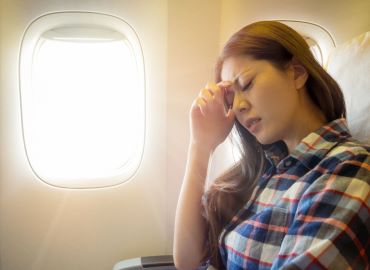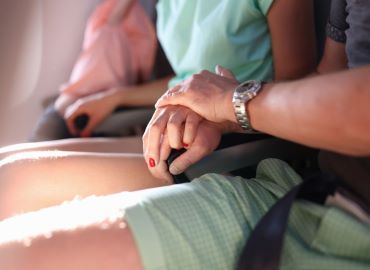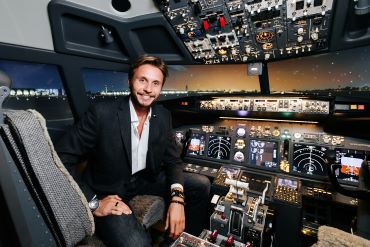
The fear of flying, known as aerophobia, is a problem commonly found in the contemporary generation of people flying on planes. According to British scientists, over half of passengers experience the fear of flying, to various extents. Some of them feel slight anxiety before and during the flight, some cannot handle the flight without sedatives or alcohol, and a certain number of people, at all, prefer overland transport or simply avoid long distance journeys.
All fears of most passengers arise solely from air crash details exaggerated and peddled by mass media in their news coverage, reports, stories, investigations etc. Given a relatively small share of the total passenger flow of those injured in air accidents, the infoglut significantly inflates danger in aerophobes’ minds.
It’s worth mentioning that aerophobia may develop in people of different educational levels and social status. Among these you’d meet successful entrepreneurs who are very smart and educated people absolutely aware of the statistics but nevertheless scared of flying.

Some of them are convinced that no one and nothing can help them. We classify this type of aerophobes as suspicious. As a rule, when not in flight they are quite self-confident people with a strong habit of controlling the situation and decision-making. Such people feel tense throughout the flight, listen out to sounds, double-check the wings are in place, and break into a cold sweat on entering the turbulence zone. Another group just feels scared quietly, freezing onto the armrests and filled with horror throughout the flight.
It is quite obvious that every upcoming flight is deemed to be stressful, so aerophobes keep trying to find a solution. It is natural and typical of a modern person to seek medical advice from “specialists”. To the great delight of “aviation psychologists", such counselling means easy money for them as it is well known that the problem cannot in any way be solved just through ordinary persuasion. Numerous aerophobia-oriented strategies, approaches, courses and training are nothing else but chasing money from unwary people.
Before wasting your own money on yet another “aerophobia expert” just ask yourself a couple of simple questions: “If such specialists could reduce the number of flight accidents or prevent pilots from making fatal errors why are they not the top-paying specialists employed by air companies? Can they guarantee you an absolutely safe flight?”
So why pay them for the “compelling arguments” if you answered “No” to your first two questions?
Take your time and don’t panic or feel desperate. Aerophobia is a solvable problem. It certainly does not guarantee you an absolutely safe flight but it can relieve your anxiety - at least for most of you.
At root, we are not scared of the flight as such (imagine you dropped asleep at home to wake up in a new place next morning), we are scared of some inductive stimuli accompanying us during our journey. We listen out to engine sounds, our vestibular system registers accelerations, and flight attendants seem to look tense. We suffer from lack of information in terms of “what is happening in the cockpit now?”.
The only way to sort out the situation is to find out what exactly is happening in the cockpit during the flight, to understand how the plane flies and what exactly the pilots do, and… to get the feel of some basic flight control techniques and skills. We’ll tell you straight off: over the years, thousands or rather tens of thousands of people have followed this path throughout this project of ours.

It took them just a few hours of practice with a pilot instructor to learn how to perform a take-off and landing. And take our word for it, this is more than enough. If you decide to choose this path here are a couple of free tips again: firstly, do not ride entertainment flight simulators. It is quite easy to identify them as they are staffed with dummy buttons for those controls that are most important for a real flight and emergency situations replication. Just pushing, pulling or turning the yoke will not bring you any result. Make sure the cockpit is real. In other words, beware of counterfeit. Secondly, you’d need 3 or 4 flight hours. Don’t make a mess of it by trying to do it all in one day. It is next to impossible to remember a lot of new stuff in one go.
As soon as you succeed in performing a landing on your own your flying course is over, which means you have received basic knowledge in aircraft flight control systems, navigation, onboard and emergency systems operation and quite a number of flight and pilots’ secrets. Believe us, this helps a lot!
Follow the series of articles:
Flight experience from TFT aero Dubai
